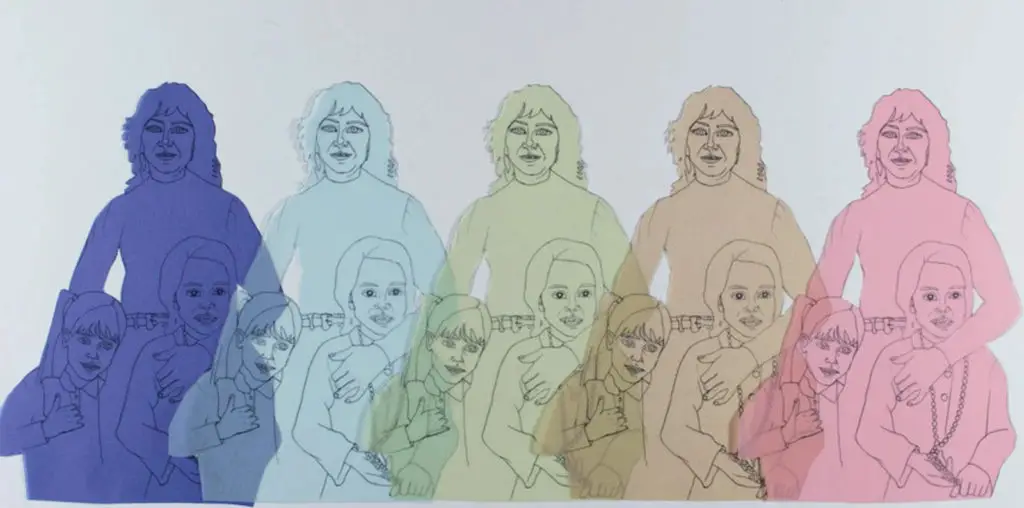
The raising of the American flag over Mt. Suribachi on the island of Iwo Jima marked a turning point in both the perception and direction of the War in the Pacific. Tactically, seizing the island provided American planes with an emergency landing strip and crippled Japan’s early warning system against American bombers. Symbolically, the famous Joe Rosenthal photograph was used by the Roosevelt Administration to convince Americans to continue supporting the war effort.
“Flags of Our Fathers,” Clint Eastwood’s naked grab for a third Best Director/Picture Oscar, tells the story of the flag raising (actually the second time the Stars and Stripes were planted on Suribachi), the battle that followed (Iwo Jima wasn’t secured for over a month afterwards), and the ensuing bond drive that brought the three surviving flag raisers back to the States (the other three died in the weeks following the taking of the photograph). It is, as is the case with most of Eastwood’s efforts, very handsomely directed. The battles scenes, set on Iwo Jima’s black sand beaches, are appropriately monochromatic, as color as well as life are leeched from the surroundings. Eastwood also has a keen eye for detail, bringing WWII-era America into sharp focus.
What “Flags of Our Fathers” is not, however, is moving, evocative, or very unique. The film, based on the book by James Bradley (son of “Doc” Bradley, the Navy corpsman who was one of the surviving three), wants to impress upon us the need to rethink the concept of heroism. Heroes, after all, are often the ones that receive no fanfare or reward, as surviving flag raisers Bradley (Ryan Phillippe), Rene Gagnon (Jesse Bradford), and Ira Hayes (Adam Beach), vainly attempt to impress upon the audiences during their tours.
Well, no kidding. I’m not sure if Eastwood thinks nothing but 15-year olds are going to see this movie, or if he’s forgotten every similarly-themed film released since 1957’s “Paths of Glory.” He may have famously stripped away the romance of the Old West in “Unforgiven,” but the war movie, unlike the western at that time, is not a genre in need of de-mythologizing. Elem Klimov, Stanley Kubrick, and Lewis Milestone are among the many who did it earlier, and better (Kubrick did it three times, and Milestone did it the year Eastwood was born). War is hell, heroism is subjective, and seemingly insignificant events are exploited for the benefit of the power elite. Who knew?
Eastwood’s decision to jump back and forth between Iwo Jima and its aftermath also doesn’t work. We should be immersed in the story of these men, but instead we’re constantly shuttled back to their publicity tour, then back to the battle (and shown very little of it at that), which effectively nullifies any buildup in dramatic tension. The raising of the flag itself doesn’t serve as the climactic moment anyway, so why not let the story play out in linear fashion so we can get to know these men and better understand their post-conflict struggles?
As for the soldiers themselves, none of the leads have the requisite heft to communicate their inner turmoil. Bradford and Phillippe are mere pretty boys, while Beach – given the greatest responsibility in portraying the tragic story of the Native American Hayes – has a catalog of expressions that runs the gamut from “stoic” to “slightly pained.”
And there needs to be a five-year moratorium on casting Neal McDonough (“Capt. Severance”) in WWII-themed movies. Half the time I thought I was having “Band of Brothers” flashbacks.
“Flags of Our Fathers” is obviously Eastwood’s attempt to say something about our love of celebrity as well as the horrors of war and its aftermath, but it’s deeply flawed. Worse, it’s overly sentimental, as if Eastwood has finally succumbed to the pitfalls of his advanced age. I’ll reserve judgment on it until I see its companion film, “Letters from Iwo Jima,” next year, but for now, “Flags of Our Fathers” has to be regarded as a failure coming from the guy who directed such classics as “High Plains Drifter” and the aforementioned “Unforgiven.”
